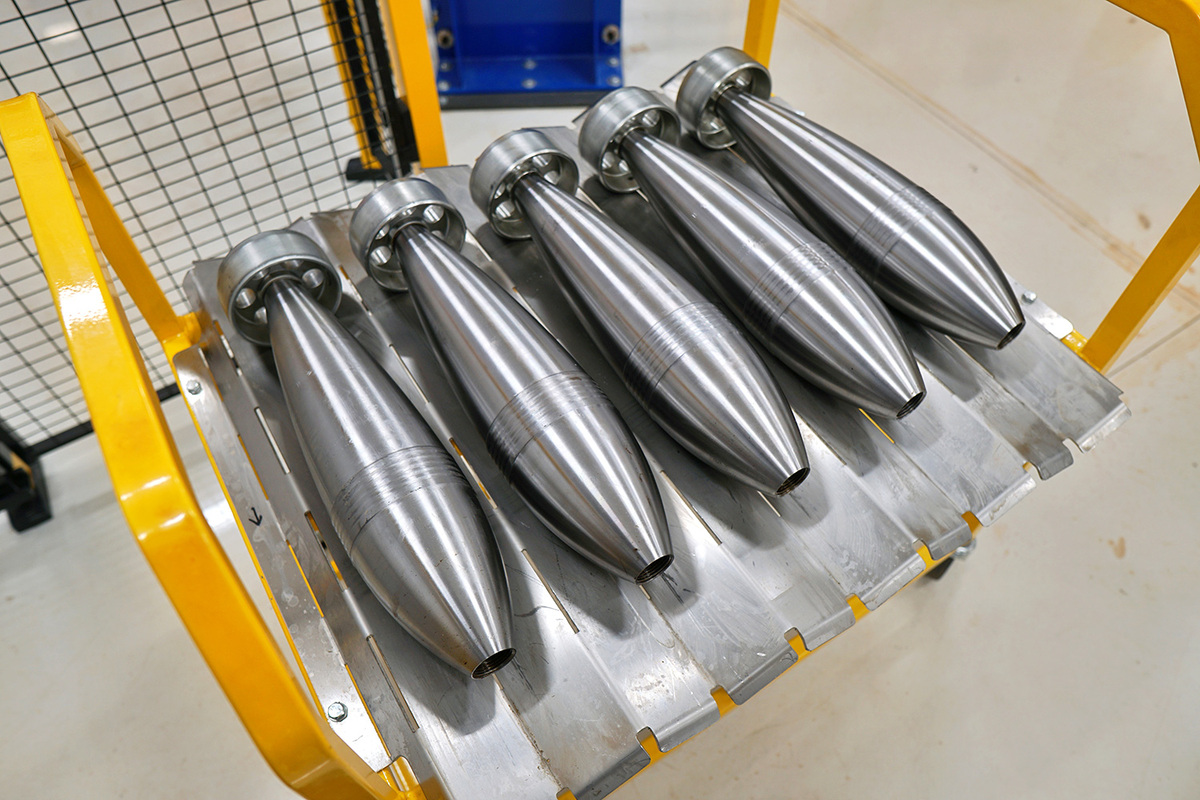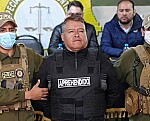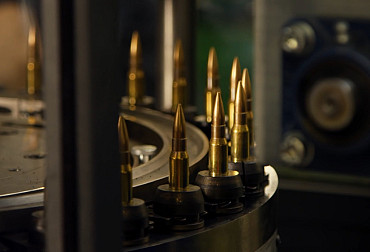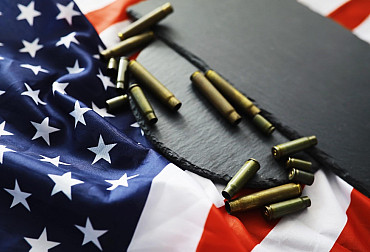Rheinmetall expands nitrocellulose production
Germany's Rheinmetall, Europe's largest ever arms manufacturer, has bought industrial nitrocellulose producer Hagedorn-NC, securing further supplies of essential raw materials for increasing artillery ammunition production. In the coming months, Rheinmetall plans to start production of military grade cellulose at Hagedorn-NC while continuing to supply existing civilian customers. The acquisition will close a 'strategic gap in the supply chain', according to the German company. Czechoslovak Group (CSG), a Czech industrial-technology group, decided to make a similar purchase last October.

"The acquisition will help us fill a capacity gap in the strategically important production of gunpowder," said Rheinmetall CEO Armin Papperger. "We are gaining an important source of raw materials and continuing our vertical integration along the entire ammunition value chain."
European artillery ammunition makers attempted to expand production immediately after Russia's 2022 invasion of Ukraine. The industry and the European Union jointly spent more than €1.5 billion to expand production of explosives, propellants and rounds, the Defense News website reported. Brussels expects to produce two million artillery shells this year, an increase of around nine times from the 230,000 shells planned for early 2023. Nitrocellulose is a key raw material for their launch.
The production of nitrocellulose is a complex and delicate process. The starting material used is a natural cellulose product derived from cotton or wood pulp. The raw material is first prepared mechanically and chemically. It is then 'nitrated' in small batches in a mixture of sulphuric and nitric acid. After further safety-critical cleaning and processing steps, the raw nitrocellulose is converted into a paste or, alternatively, mixed with other chemicals. It is then extruded into various shapes (strips, tubes, granules, etc.). This allows the burn rate, pressure and temperature development to be tailored to specific types of weapons and ammunition. The shelf life of the finished product is approximately twenty years.
According to the Swiss think tank Center for Security Studies, the production method of nitrocellulose has remained essentially unchanged over the past 100 years and is likely to remain so for the foreseeable future. It offers a satisfactory balance between security and cost-effectiveness, given the unchanging laws of physics and the largely advanced state of the art of chemical production processes.
However, the production of nitrocellulose for gunpowder carries certain commercial risks. Firstly, investment costs in the order of hundreds of millions of euros can be expected when building a gunpowder plant, as well as extensive planning and construction time. Another challenge comes with the enormous land requirements, which can range from 50 to more than 300 hectares. The capacity of such facilities, which employ several hundred staff members, ranges from around 1,000 to 3,000 tonnes per year, depending on the type of product. If there is an unexpected drop in demand for munitions, the costly production line cannot simply be 'switched' to civilian production.
Until 1990, virtually every Western European country (including smaller countries such as Belgium, the Netherlands, Sweden and Switzerland) had at least one factory producing gunpowder. Usually such a company was owned by the state. National capacities met a large part of the domestic demand for gunpowder and propellants of smaller calibers and were often exported abroad. The average production capacity of one factory was around 1,000 to 2,000 tons per year. Larger countries such as France, Italy, the United Kingdom, and West Germany often operated more than half a dozen such plants.
The market situation before 1990 was characterised by segmentation, nationalisation and large-scale production capacities. However, the 1990s brought deregulation and a decline in orders, which shook the entire nitrocellulose and gunpowder industry. European production consolidated under the leadership of a few large multinationals. They closed most of the older plants and the remaining demand was met by a few more modern production facilities. Today, the annual production of artillery gunpowder by the European market leaders (Rheinmetall, Eurenco, KNDS and Nammo) is estimated at several thousand to tens of thousands of tonnes.
The recently initiated expansion of European gunpowder production capacity aims to increase production by approximately 10,000 tonnes per year. This target is pursued on three main levels. The first involves the modernisation, full utilisation and possible expansion of plants still operating to Western standards. These include, for example, the Karlskrona (Sweden), Aschau (Germany), Wimmis (Switzerland), Pardubice (Czech Republic) and Granada (Spain) plants. The second type involves the construction of new plants or the reactivation of decommissioned plants. New production capacities are currently planned in Hungary and Romania, among others. Last November, the Polish government signed a letter of intent with fertiliser producer Grupa Azoty and defence equipment manufacturer Polska Grupa Zbrojeniowa to set up nitrocellulose and gunpowder production in Poland. A major reactivation of a historic facility is under way in Bergerac (France). The third level concerns the conversion of plants in Eastern Europe, which used to produce according to Soviet standards, to NATO standards. It should be noted, however, that Ukraine and some NATO allies still demand Eastern calibre ammunition and the corresponding raw materials.
In this effort, Western European suppliers in particular face obstacles that go beyond the problems of high fixed and variable costs. In addition to the general dependence on pulp imports from China and India, these problems include complicated environmental regulations, energy and labour costs, and significant difficulties in finding suitable production sites or skilled workers. In addition, there is uncertainty in the industry as to whether Western European governments are actually going to use the production capacity planned today, which will not be available for several years. At the same time, Europeans are aware that the recovery of nitrocellulose and gunpowder production is not solely a market issue. This is particularly true when there is a mismatch between political strategic interests and business logic. These include the creation of short-term surge capacity regardless of (expected) demand cycles, decentralisation to mitigate the impact of accidents or sabotage, and diversification in terms of ownership and avoiding the emergence of industrial monopolies.
Rheinmetall plans to produce 1.1 million 155 mm artillery shells per year by 2027. Demand for gunpowder will only grow in the coming years. For this reason too, Rheinmetall has decided to purchase Hagedorn-NC, the fourth nitrocellulose producer in its portfolio. This plant will complement Nitrochemie's joint venture with Swiss RUAG in Wimmis (Canton Bern), the production site in Murcia, Spain, and the plant in Wellington, South Africa. With the acquisition of Hagedorn-NC, Germany's leading military equipment manufacturer will take on 90 new employees, who today produce nitrocellulose specifically for industrial applications (mainly varnishes and printing inks).
By comparison, the Czechoslovak Group bought the US cellulose plant of International Flavors & Fragrances in Walsrode, Germany, last October. CSG plans to eventually add nitrocellulose production for munitions in addition to industrial applications (wood coatings and nail polish). More than 350 people work at the Walsrode plant and the adjacent industrial park that the company purchased.
New or additional production capacity for nitrocellulose and gunpowder is being built or planned throughout Europe. Indeed, the shortage of bullets for Ukraine and its struggle against an aggressive Russia, as well as NATO's inability to supply enough ammunition, have alarmed Western military planners and politicians. The long-term European solution involves further investment in EU production capacity, revised or more stringent regulation and strategic diversification of suppliers to reduce vulnerability.










